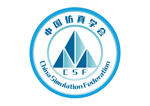Journal of System Simulation
Abstract
Abstract: Due to the poor environment perception of car in bad weather, the detection ability on dynamic targets is significantly reduced, and thus the problems such as low accuracy and poor robustness of the deep learning-based target detection network will occur when detecting pedestrians and vehicles in foggy days. A YOLOv5-SGE foggy detection network is proposed on the basis of the combination of image dehazing DehazeNet and the improved YOLOv5. The adaptive calculation of anchor frame is realized by canceling the initial anchor frame of YOLOv5, and the anchor frame suitable for the current dataset is generated. A three-dimensional weighted attention mechanism is added to the feature extraction module, so that the network can quickly capture the region of interest and suppress the useless information. Instead of the standard convolution of the fusion module the lightweight convolution GSConv is used to compensate for the loss of semantic information and reduce the complexity of tmodel. EIoU loss function is used to replace the original loss function CIoU of network to accelerate the network convergence speed. The experimental results show that, compared with the other four algorithms, the proposed model has a higher detection accuracy and mAP reaches 84%, which verifies the effectiveness of the proposed algorithm.
Recommended Citation
Su, Tong; Wang, Ying; Deng, Qiyang; and Li, Zhaobin
(2024)
"Improved Foggy Pedestrian and Vehicle Detection Algorithm Based on YOLOv5,"
Journal of System Simulation: Vol. 36:
Iss.
10, Article 16.
DOI: 10.16182/j.issn1004731x.joss.23-0725
Available at:
https://dc-china-simulation.researchcommons.org/journal/vol36/iss10/16
First Page
2413
Last Page
2422
CLC
TP391
Recommended Citation
Su Tong, Wang Ying, Deng Qiyang, et al. Improved Foggy Pedestrian and Vehicle Detection Algorithm Based on YOLOv5[J]. Journal of System Simulation, 2024, 36(10): 2413-2422.
DOI
10.16182/j.issn1004731x.joss.23-0725
Included in
Artificial Intelligence and Robotics Commons, Computer Engineering Commons, Numerical Analysis and Scientific Computing Commons, Operations Research, Systems Engineering and Industrial Engineering Commons, Systems Science Commons

